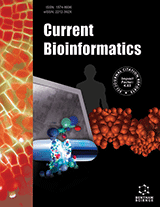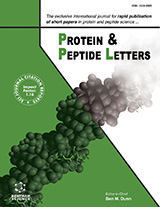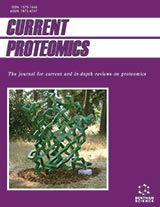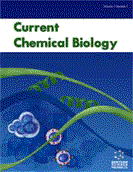Abstract
Background: Tufuling Qiwei Tangsan (TQTS) is a commonly used Mongolian medicine preparation against psoriasis in China. However, its mechanism of action and molecular targets for the treatment of psoriasis is still unclear. Network pharmacology can reveal the synergistic mechanism of drugs at the molecular, target, and pathway levels and is suitable for the complex study of traditional Chinese medicine formulations. However, it is rarely involved in the application of Mongolian medicine with the same holistic concept of traditional Chinese medicine.
Methods: In this paper, the active compounds of TQTS were collected, and their targets were identified. Psoriasis-related targets were obtained by analyzing the differential expressed genes between psoriasis patients and healthy individuals. Then, the network concerning the interactions of potential targets of TQTS with well-known psoriasis-related targets was built. The core targets were selected according to topological parameters. And the enrichment analysis was carried out to explore the mechanism of action of TQTS. Moreover, molecular docking was performed to study the interaction between the selected ligands and receptors related to psoriasis.
Result and Conclusion: Eighty-five active compounds of TQTS were screened, with corresponding 270 targets, and 313 differentially expressed genes were identified. Additionally, enrichment analysis showed that the targets of TQTS for treating psoriasis were mainly involved in multiple biological processes, including apoptosis, growth factor response, etc., and related pathways including PI3K-Akt and MAPK signaling pathway, and so on. Genes such as NFKB1, TP53, and MAPK1 are the key genes in the gene pathway network of TQTS against psoriasis. The 4 main active components of TQTS have certain binding activity with 13 potential targets, and the stability of their interaction with AKT1 is found to be the most efficient, which indicates the potential mechanism of TQTS on psoriasis.
Keywords: Mongolian medicine, tufuling, psoriasis, network pharmacology, molecular mechanism, molecular docking.
Graphical Abstract
Current Bioinformatics
Title:A Network Pharmacology Approach to Explore the Underlying Mechanism of Tufuling Qiwei Tangsan in Treating Psoriasis
Volume: 16 Issue: 6
Author(s): Xiaolei Ma, Yinan Lu*, Yang Lu and Zhili Pei
Affiliation:
- College of Computer Science and Technology, Jilin University, Changchun, Jilin,China
Keywords: Mongolian medicine, tufuling, psoriasis, network pharmacology, molecular mechanism, molecular docking.
Abstract:
Background: Tufuling Qiwei Tangsan (TQTS) is a commonly used Mongolian medicine preparation against psoriasis in China. However, its mechanism of action and molecular targets for the treatment of psoriasis is still unclear. Network pharmacology can reveal the synergistic mechanism of drugs at the molecular, target, and pathway levels and is suitable for the complex study of traditional Chinese medicine formulations. However, it is rarely involved in the application of Mongolian medicine with the same holistic concept of traditional Chinese medicine.
Methods: In this paper, the active compounds of TQTS were collected, and their targets were identified. Psoriasis-related targets were obtained by analyzing the differential expressed genes between psoriasis patients and healthy individuals. Then, the network concerning the interactions of potential targets of TQTS with well-known psoriasis-related targets was built. The core targets were selected according to topological parameters. And the enrichment analysis was carried out to explore the mechanism of action of TQTS. Moreover, molecular docking was performed to study the interaction between the selected ligands and receptors related to psoriasis.
Result and Conclusion: Eighty-five active compounds of TQTS were screened, with corresponding 270 targets, and 313 differentially expressed genes were identified. Additionally, enrichment analysis showed that the targets of TQTS for treating psoriasis were mainly involved in multiple biological processes, including apoptosis, growth factor response, etc., and related pathways including PI3K-Akt and MAPK signaling pathway, and so on. Genes such as NFKB1, TP53, and MAPK1 are the key genes in the gene pathway network of TQTS against psoriasis. The 4 main active components of TQTS have certain binding activity with 13 potential targets, and the stability of their interaction with AKT1 is found to be the most efficient, which indicates the potential mechanism of TQTS on psoriasis.
Export Options
About this article
Cite this article as:
Ma Xiaolei , Lu Yinan *, Lu Yang and Pei Zhili , A Network Pharmacology Approach to Explore the Underlying Mechanism of Tufuling Qiwei Tangsan in Treating Psoriasis, Current Bioinformatics 2021; 16 (6) . https://dx.doi.org/10.2174/1574893616666210315093639
| DOI https://dx.doi.org/10.2174/1574893616666210315093639 |
Print ISSN 1574-8936 |
| Publisher Name Bentham Science Publisher |
Online ISSN 2212-392X |
 12
12
- Author Guidelines
- Bentham Author Support Services (BASS)
- Graphical Abstracts
- Fabricating and Stating False Information
- Research Misconduct
- Post Publication Discussions and Corrections
- Publishing Ethics and Rectitude
- Increase Visibility of Your Article
- Archiving Policies
- Peer Review Workflow
- Order Your Article Before Print
- Promote Your Article
- Manuscript Transfer Facility
- Editorial Policies
- Allegations from Whistleblowers


















.jpeg)








